Have you ever stood in the hair care aisle, completely overwhelmed by countless products, wondering which ones would actually work for your hair? You’re not alone. The frustration of investing in expensive products only to be disappointed is something many of us share. The secret to ending this cycle isn’t finding the “perfect product” – it’s understanding your unique hair texture. When I finally discovered my true hair type through a reliable hair texture chart, it completely transformed my relationship with my hair. Today, I’ll share the top 5 hair texture charts that can help you experience that same breakthrough.
Understanding Hair Texture: The Foundation of Effective Hair Care
Your hair texture isn’t just a casual descriptor – it’s the blueprint for your entire hair care approach. Hair texture refers to the natural shape and pattern of your individual hair strands. Some people have straight, silky locks that rarely tangle, while others enjoy springy coils that create amazing volume. Understanding your specific texture unlocks the mystery behind which products will actually deliver results.
Many people waste hundreds of dollars yearly on ineffective products simply because they’ve never properly identified their hair type. When you understand your texture profile, you’ll shop smarter, style better, and finally achieve the hair health you’ve been chasing.
Hair texture works alongside other factors like porosity (how well your hair absorbs and retains moisture). This becomes particularly important when dealing with high porosity hair, which requires specialized care to maintain health and prevent breakage.
What Makes a Reliable Hair Texture Chart?
Not all hair texture charts provide the same level of insight. The most helpful classification systems provide clear visual examples alongside detailed descriptions of each hair type. These charts should consider multiple dimensions of hair characteristics rather than focusing solely on curl pattern.
Professional stylists typically rely on comprehensive systems that account for curl pattern, strand thickness, density, and porosity. While home-use charts might simplify these categories somewhat, they should still provide enough information for you to accurately position your hair within the spectrum.
Many mass-market charts fail to address the tremendous variation that exists within categories. For instance, two people might both have “Type 3a” hair, yet require totally different care approaches due to differences in porosity, density, or scalp condition. The most valuable charts acknowledge these nuances.
Top 5 Hair Texture Charts for Accurate Hair Typing
1. The Andre Walker Hair Typing System
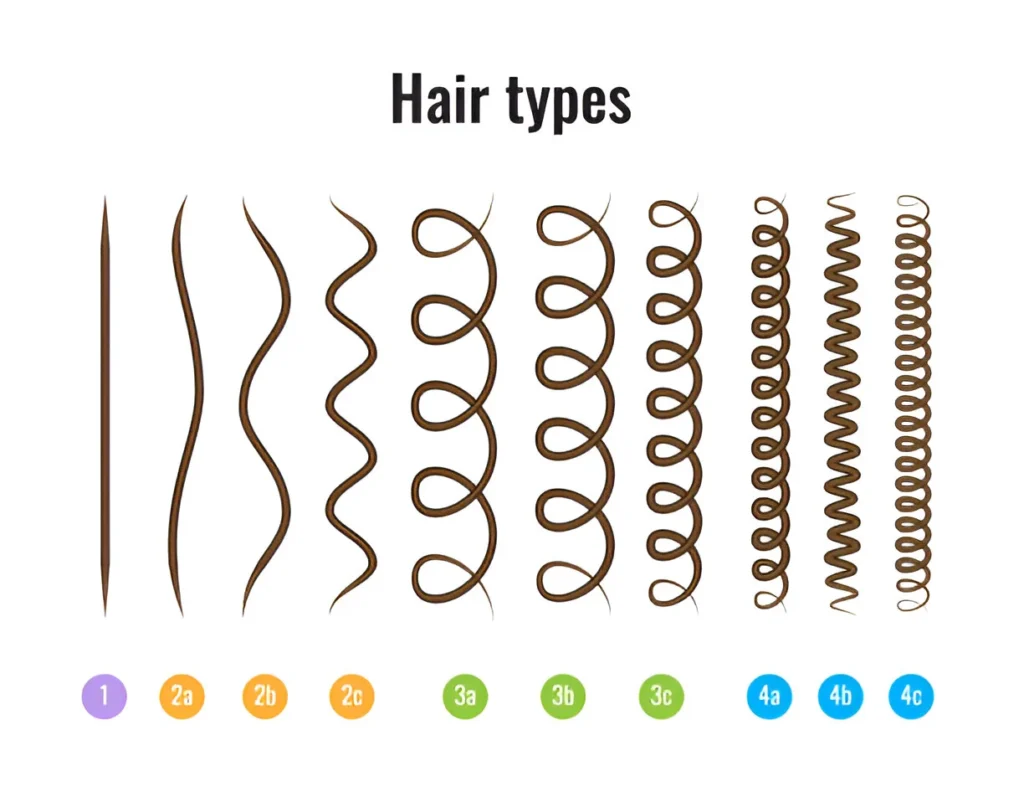
What it is: The Andre Walker system represents perhaps the most widely recognized hair classification method available today. It organizes hair into four main categories (1-4), with subcategories (A-C) that provide additional specificity. Type 1 represents straight hair, Type 2 covers wavy patterns, Type 3 encompasses curly textures, and Type 4 describes coily or kinky hair types.
Who created it: This system was developed by Andre Walker, Oprah Winfrey’s long-time hairstylist. His expertise working with diverse hair textures led to this practical categorization approach that revolutionized how we discuss hair.
Best for: The Walker system is excellent for helping individuals understand their natural curl pattern. It provides an excellent starting vocabulary for discussing hair needs with stylists and making initial product selections.
Limitations: While comprehensive for curl patterns, this system doesn’t directly address other crucial factors like strand thickness, density, or porosity. This can leave some people still wondering why products recommended for their “type” aren’t delivering expected results.
| Hair Type | Description | Characteristics | Common Needs |
| Type 1A | Straight & Fine | Completely straight, shiny, difficult to curl | Volume, oil control |
| Type 1B | Straight & Medium | Straight with slight body | Volume, light moisture |
| Type 1C | Straight & Coarse | Straight but thick and resilient | Smoothing, moderate moisture |
| Type 2A | Loose Waves | S-shaped waves from mid-length | Definition, frizz control |
| Type 2B | Defined Waves | More defined waves from roots | Moisture, defining products |
| Type 2C | Defined Waves + Some Curls | Mixture of waves and curls | Moisture, definition, frizz control |
| Type 3A | Loose Curls | Springy, well-defined loops | Moisture, definition, lightweight products |
| Type 3B | Medium Curls | Tighter curls, springy ringlets | Significant moisture, definition |
| Type 3C | Tight Curls | Dense corkscrew curls | Heavy moisture, definition, protection |
| Type 4A | Tight Coils | S-patterned coils with visible curl pattern | Maximum moisture, gentle handling |
| Type 4B | Z-patterned Coils | Less defined curl pattern, sharp angles | Maximum moisture, protection, gentle handling |
| Type 4C | Tight Coils with Less Definition | Very tight coil pattern with less visible definition | Maximum moisture, protection, gentle handling |
2. The LOIS System (L.O.I.S)
What it is: The LOIS system takes a different approach, focusing specifically on textured hair. It classifies hair using four letter designations: L (straight with slight curve), O (curls that form O shapes), I (irregular curl patterns), and S (straight textured strands).
Who created it: This system was developed by hair care specialists seeking a more nuanced approach to textured hair than what was originally offered by the Walker system.
Best for: People with textured hair who feel the Walker system doesn’t fully capture their hair’s unique characteristics. It offers more nuanced descriptions for those with mixed texture patterns.
Limitations: The LOIS system remains less universally recognized, which means fewer product recommendations explicitly reference it. It requires more education to apply effectively.
| LOIS Type | Description | Characteristics | Best Products |
| L-Type | Straight with bend | Slight curve, not quite wavy | Volumizing, light moisture |
| O-Type | Circular curl pattern | Forms clear O-shaped loops | Curl enhancers, moderate moisture |
| I-Type | Irregular curl pattern | Combination of patterns, zigzags | Versatile styling products, targeted moisture |
| S-Type | Straight texture | Straight pattern with textured feel | Smoothing, protective products |
3. The FIA Hair Texture Classification
What it is: This straightforward classification focuses specifically on the thickness of individual hair strands, categorizing them as Fine, Medium, or Coarse (sometimes called Thick).
Best for: Understanding your hair’s structural strength and behavioral tendencies. Fine hair typically requires volume-building products but can easily become weighed down. Coarse hair needs additional moisture but resists styling efforts.
How to use: The simplest test involves taking a single clean, dry strand of hair and comparing it to a sewing thread. If your hair is noticeably thinner, you likely have fine hair. If it’s similar in thickness, you have medium hair. If your strand is thicker than the thread, you have coarse hair.
Limitations: This system only addresses one dimension of hair character and must be used alongside other classification methods for a complete picture.
Visual Guide: Testing Your Hair Strand Thickness at Home
- Pluck a clean, dry hair strand
- Place it next to a standard sewing thread on a light-colored surface
- Observe the relative thickness without stretching either strand
- If uncertain, try the “feel test” by rolling a strand between your fingers – fine hair feels nearly imperceptible, while coarse hair feels distinctly present
4. The Hair Porosity Chart
What it is: This specialized chart focuses exclusively on how readily your hair absorbs and retains moisture – a critical factor in hair health. Hair porosity falls into three main categories: Low, Normal, and High.
Best for: Understanding why moisture-related products perform differently for you than others. This becomes especially crucial for those with high porosity hair, which often struggles with moisture retention despite frequent conditioning.
How to use: The classic float test involves placing a clean hair strand in water – low porosity hair floats for a long time, normal porosity hair gradually sinks, and high porosity hair sinks immediately. Alternatively, spray a section of clean, dry hair with water – the absorption speed reveals your porosity level.
Limitations: While essential for product selection, porosity alone doesn’t provide a complete picture of your hair needs.
| Porosity Level | Characteristics | Product Recommendations | Care Tips |
| Low Porosity | Takes long to wet and dry, product sits on hair, resists color | Lightweight products, heat application during treatments | Use steam treatments, avoid protein, clarify regularly |
| Normal Porosity | Easily absorbs moisture, holds styles well, accepts color easily | Wide range of products work well | Balance moisture and protein, maintain with regular care |
| High Porosity | Absorbs water quickly, dries rapidly, prone to frizz and breakage | Rich moisturizers, anti-humectants in humidity, protein treatments | Use leave-in conditioners, seal with oils/butters, regular protein treatments |
5. The Comprehensive Texture-Density-Porosity Chart

What it is: This integrated approach combines multiple hair characteristics into a single assessment system. It acknowledges that hair behavior results from the interplay between curl pattern, strand thickness, hair density (how many strands per square inch), and porosity.
Best for: Gaining a truly complete understanding of your hair’s needs. This approach explains why two people with seemingly identical curl patterns might require entirely different product formulations.
How to use: Work through each characteristic independently, then combine your findings to create your unique hair profile. This might result in descriptions like “3B, medium thickness, high density, high porosity” – a precise blueprint for product selection.
Why it works: This comprehensive approach addresses the frustration many feel when products recommended for their “hair type” deliver disappointing results. By accounting for multiple factors, your product choices become far more targeted.
| Texture | Density | Porosity | Product Focus | Styling Tips |
| Straight | Low | Low | Volumizing, lightweight | Avoid heavy products, use root lifters |
| Straight | High | High | Smoothing, moisture-sealing | Focus on anti-frizz, protecting cuticle |
| Wavy | Low | Normal | Defining, lightweight moisture | Scrunch-to-enhance, avoid weighing down |
| Wavy | High | Low | Defining, moisturizing | Layer products, consider clarifying routines |
| Curly | Low | High | Maximum moisture, protein balance | Focus on leave-ins, sealing oils, minimal manipulation |
| Curly | High | Low | Moisturizing, defining | Product distribution techniques, sectioning importance |
| Coily | Low | High | Rich moisture, protein, protection | Protective styling, intense conditioning |
| Coily | High | Normal | Balanced moisture, definition | Section work, thorough but gentle detangling |
How to Determine Your Hair Type Using These Charts
Step-by-Step Guide to Analyzing Your Hair Texture
- Preparation: Start with freshly washed hair without any product buildup. Allow your hair to air dry completely without manipulation to observe its natural state.
- Visual Assessment: Stand in natural lighting with a mirror. Observe the natural pattern your hair creates. Does it hang straight? Form gentle waves? Create springy curls? Form tight coils?
- Touch Assessment: Run your fingers through a small section of hair. Note the thickness of individual strands and how densely packed they appear. Does your hair feel silky, wiry, fine, or robust?
- Special Considerations: Many people have multiple texture patterns in different areas. Note any differences between your crown, nape, and temple areas, as these will influence your styling approach.
Common Mistakes When Using Hair Texture Charts
- Assessing manipulated hair: Your flat-ironed or freshly blow-dried hair won’t reveal your true texture. Always assess completely natural, air-dried hair.
- Overlooking damage: Chemical treatments, heat styling, and environmental damage can temporarily alter your actual texture. Deep conditioning for several weeks might reveal your true pattern.
- Focusing too narrowly: Determining you have “Type 2B hair” isn’t enough – you need to understand strand thickness, density, and porosity too.
- Ignoring changes: Hair texture can shift with hormonal changes, aging, or medical conditions. Reassess periodically, especially if products suddenly seem less effective.
Tailoring Your Hair Care Routine Based on Your Hair Type
Product Selection Guide by Hair Type
The right products transform hair care from frustrating to fantastic. Here’s a streamlined approach based on hair characteristics:
For straight hair: Focus on volumizing products that won’t weigh hair down. Use lightweight conditioners applied mainly to ends. Consider occasional clarifying treatments to remove buildup.
For wavy hair: Balance moisture with lightweight formulas that enhance natural waves without creating crunchiness. Leave-in conditioners and curl-enhancing mousses often work beautifully.
For curly hair: Prioritize moisture-rich products that define without stiffness. Co-washing (conditioner washing) often works well, with traditional shampoo used sparingly.
For coily hair: Maximum moisture becomes essential. Consider cream-based cleansers, rich deep conditioners, and layered leave-in products sealed with natural oils or butters.
Special Section: Product Recommendations for High Porosity Hair
High porosity hair requires specialized care to boost health quickly. Focus on:
- Protein-rich treatments (once weekly) to temporarily fill gaps in the hair cuticle
- Moisturizing deep conditioners used with gentle heat to maximize penetration
- Leave-in conditioners that contain humectants, such as honey or glycerin, are beneficial for hydration.
- Sealing oils, such as jojoba, argan, or almond oil, can be applied to damp hair for best results.
- Use anti-humectants in extremely humid conditions to prevent excessive swelling.
- Products that are pH-balanced help to tighten the cuticle layer.
Styling Techniques for Different Hair Textures
Your texture doesn’t just determine products – it should guide your entire styling approach:
For straight hair: Focus on creating volume at the roots while maintaining smoothness. Lightweight mousses applied at the roots, followed by round brush styling, typically deliver best results.
For wavy hair: Enhance natural waves with scrunching techniques. Apply styling products to soaking wet hair, scrunch gently with a microfiber towel, and either diffuse or air dry without disturbing the pattern.
For curly hair: Product distribution becomes crucial. Apply styling products to very wet hair using praying hands or rake-and-shake methods. Diffuse on low heat or air dry with minimal touching.
For coily hair: Section work is essential for even product distribution. Techniques like shingling, finger coiling, or the L.O.C method (Liquid, Oil, Cream) help define and protect delicate strands.
When Hair Texture Changes: Understanding Hair Health
Natural vs. Temporary Texture Changes
Your hair texture isn’t permanently fixed. Various factors can create both temporary and lasting changes:
Hormonal shifts: Pregnancy, menopause, or thyroid conditions commonly alter texture, often increasing curl or adding unexpected waves.
Aging process: Most people experience gradual texture changes with age, typically resulting in coarser, drier strands with more irregular patterns.
Health conditions: Various medical conditions and medications can temporarily alter hair growth patterns and texture.
Damage assessment: Heat styling, chemical processes, and environmental stressors create temporary texture changes by disrupting your hair’s natural structure. These typically resolve with proper care and new growth.
Boosting High Porosity Hair Health Fast
High-porosity hair presents specific challenges but benefits quickly from appropriate care:
Protein-moisture balance: High-porosity hair usually requires a balance of both protein and moisture. Alternate between protein treatments and deep moisturizing sessions weekly.
Cuticle-sealing techniques: Use cold water rinses after conditioning to help seal the cuticle layer. Apply diluted apple cider vinegar (1 tablespoon per cup of water) as a final rinse to restore pH balance.
Quick repair strategies: For immediate improvement, try overnight oil treatments with lightweight penetrating oils like argan or baobab. Cover with a silk scarf to prevent transfer to bedding.
Timeline for results: With consistent appropriate care, high porosity hair typically shows significant improvement within 2-3 weeks. Complete transformation usually requires 2-3 months as new, healthier growth emerges.
Conclusion
Identifying your true hair texture through reliable hair texture charts represents the first crucial step toward hair transformation. Rather than chasing endless product recommendations or feeling frustrated by unfulfilled promises, understanding your unique texture profile empowers you to make informed decisions about products, styling techniques, and maintenance routines.
Remember that hair care isn’t one-size-fits-all. Your specific combination of curl pattern, strand thickness, density, and porosity creates a unique blueprint that deserves customized attention. By utilizing the charts outlined above, you’ll gain clarity about your hair’s actual needs rather than following generic advice.
Embrace your natural texture while providing the specific care it requires. With consistent attention to your hair’s particular needs, you’ll discover that “difficult” hair was simply misunderstood hair all along. Your journey to your best hair ever begins with knowledge – and now you have the tools to truly understand what your hair has been trying to tell you.
FAQs About Hair Texture Charts
Can hair have multiple textures? Absolutely! Most people have at least slight variations between different sections. The crown area often displays a different pattern than the nape or temples. When this variation is significant, you’ll need to adjust techniques and potentially use different products for different sections.
How often should I reassess my hair type? Check your texture approximately every six months, or whenever you notice significant changes in how your hair behaves. Seasonal shifts, hormonal fluctuations, and changes in health status can all influence your texture profile.
Do hair products change your natural texture? Products can temporarily enhance or subdue your natural pattern but cannot permanently change your genetic texture. However, consistent use of appropriate products can optimize your natural pattern’s appearance and health.
Is high porosity hair always damaged? Not necessarily. While damage often leads to increased porosity in hair, some individuals are genetically predisposed to having more porous hair. The key difference: genetic high porosity appears consistent from roots to ends, while damage-induced porosity shows more porosity toward the ends.
Can genetics affect your hair texture? Genetics form the primary determination of your hair texture. Your DNA blueprint determines your unique curl pattern, strand thickness, and natural porosity level. Environmental factors and care practices then influence how these genetic tendencies express themselves.
How do treatments like relaxers affect hair texture classification? Chemical treatments temporarily override your natural texture pattern. When assessing your true texture, you’ll need to examine new growth at the roots or wait until the treated portion grows out. Understanding your natural texture remains important even with chemical treatments, as it helps predict how treatments will perform and how to maintain hair health.


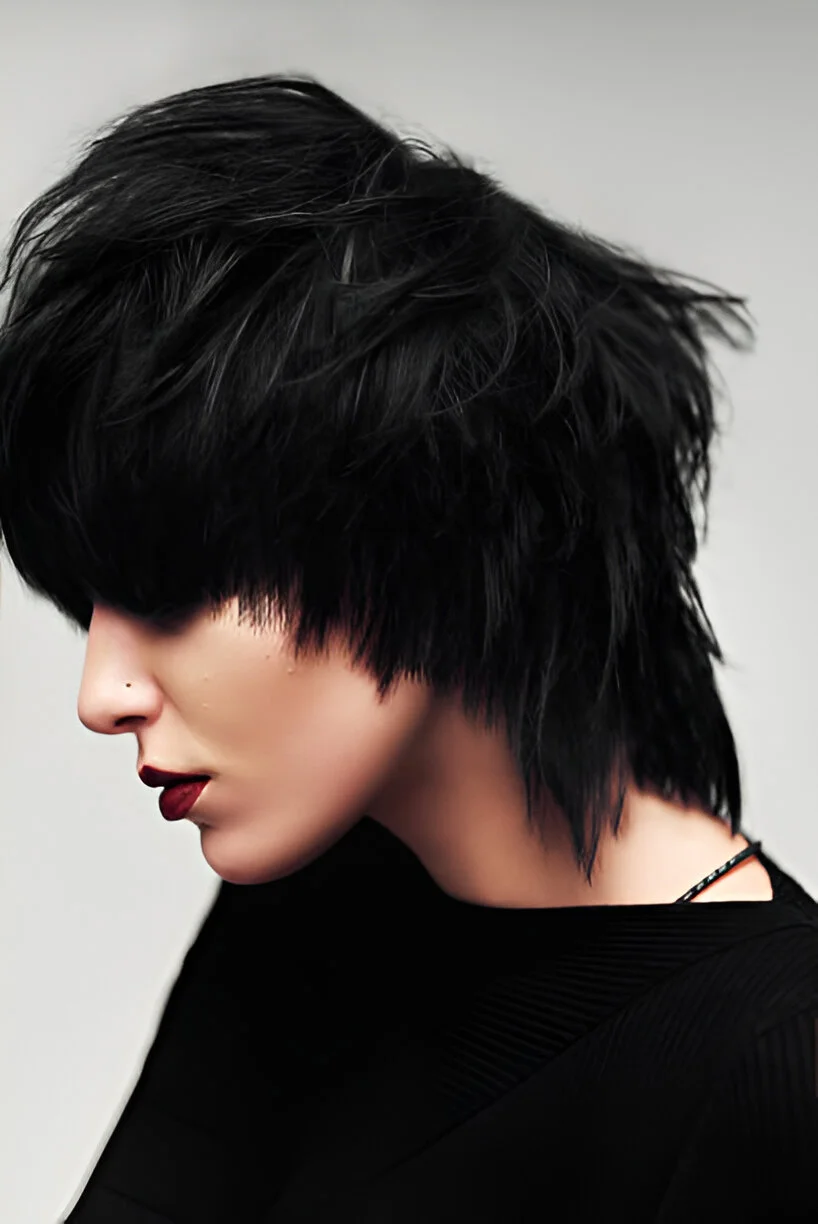
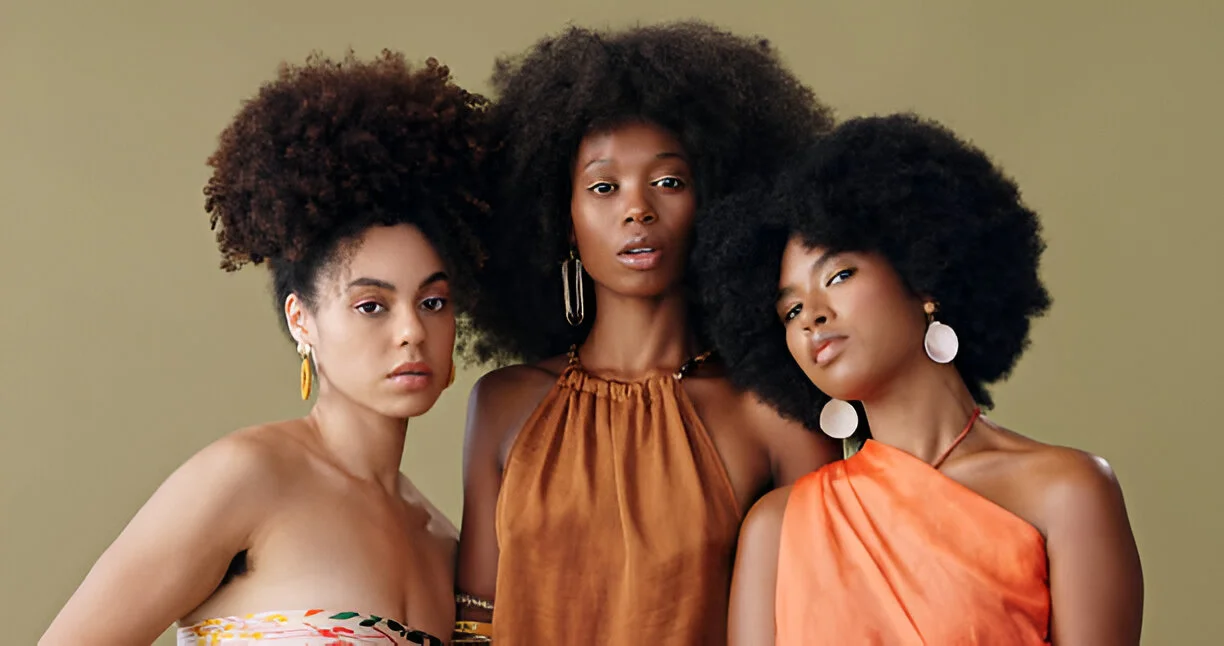

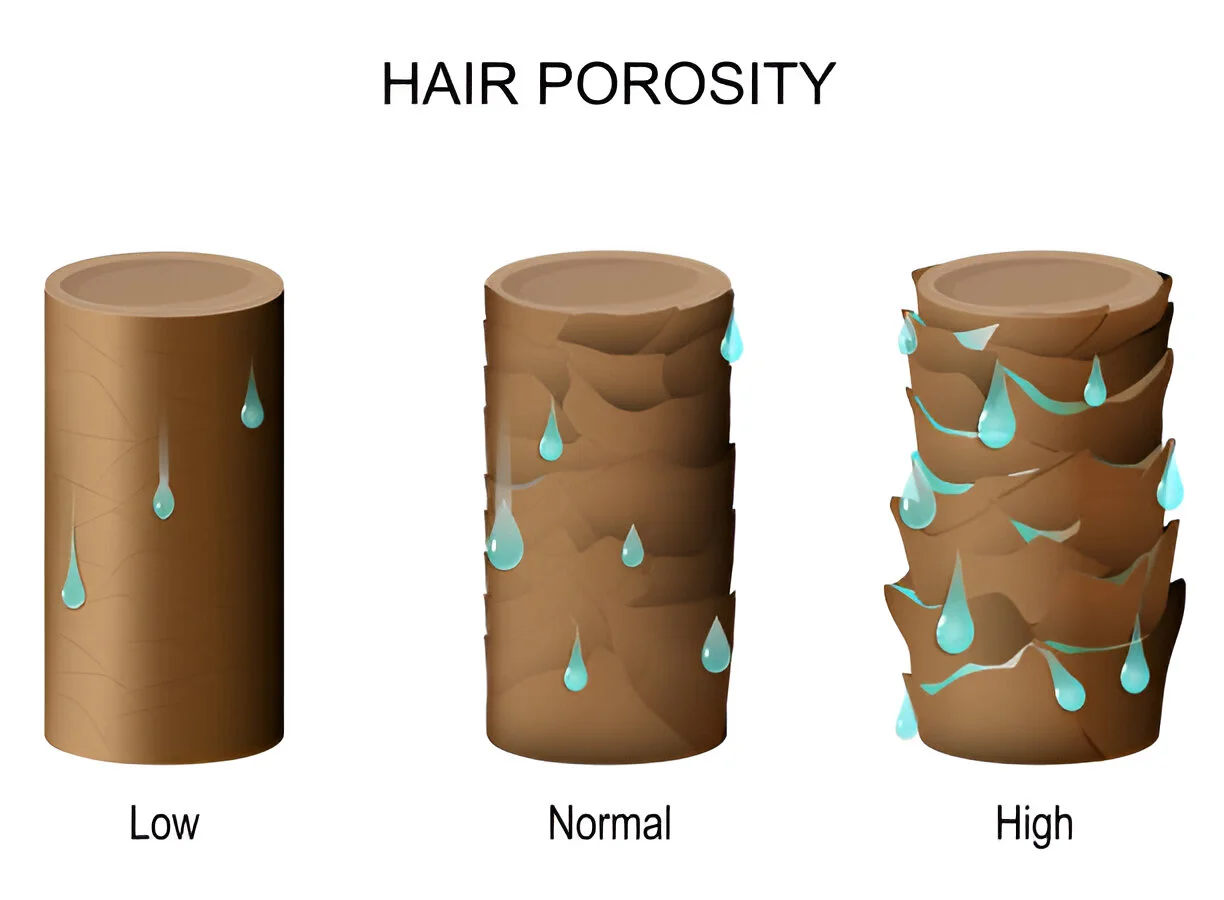
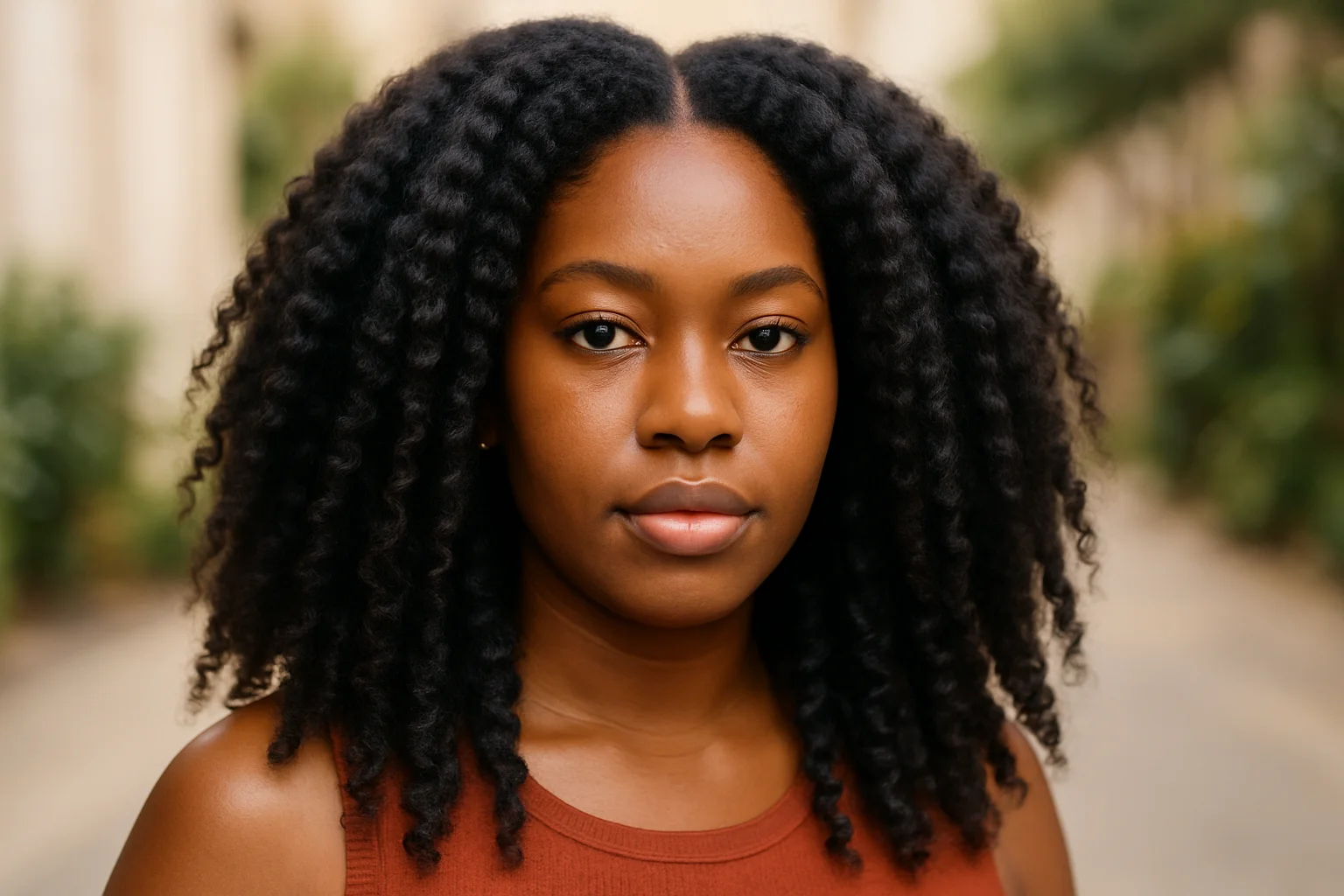

8 thoughts on “Top 5 Hair Texture Charts to Know Your Hair Type”
Comments are closed.